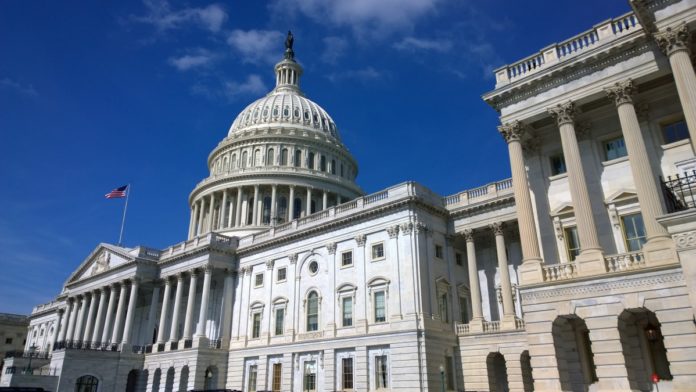The Kansas governor could still fill vacancies for the U.S. Senate but only from the same party as the person who vacated the position.
The Senate Federal and State Affairs Committee on Monday adopted a compromise proposal allowing the governor to pick a “suitable” person who had been registered for the 10 preceding years with the same political party as the previous senator.
The appointment would be subject to confirmation by the state Senate under the bill that was moved out of committee on Monday morning.
Under current law, the Kansas governor appoints that replacement to serve until the next election for the U.S. Senate.
Republican state Sen. Caryn Tyson of Parker had originally proposed allowing the political parties to pick a replacement for the U.S. Senate.
The governor would have had to appointment the person picked by the political party of the previous senator.
But the attorney general’s office warned there could be a constitutional issue for replacing U.S. senators in that manner.
Instead, Tyson asked a Senate committee to consider Oregon and Wisconsin as models for filling U.S. Senate vacancies, two states where elections are held for those openings.
The committee also considered the method used in Wyoming, where the state political party nominates three candidates from the same party as the person who vacated the position. The governor chooses the replacement.
Among the 46 states that give their governors authority to name replacement senators, 11 limit their choice in some way, according to the Pew Research Center.
Seven states – Hawaii, Kentucky, Maryland, Montana, North Carolina, West Virginia and Wyoming – allow the governor to choose from a list of nominees submitted by the previous senator’s party, according to Pew.
Utah requires the governor to choose from a list of candidates submitted by the legislature, all of whom must be of the same party as the previous senator.
And Arizona and Oklahoma just require the governor to pick someone from the previous senator’s party.
Republican state Sen. Mike Thompson, chair of the Federal and State Affairs Committee, said he thought the Oregon model for picking a Senate replacement was confusing and that it could take five months to fill a vacancy.
Thompson said the proposal that advanced out of committee on Monday – based on Oklahoma – was more “simple and straightforward.”
“It doesn’t alter what we’re already doing that much,” Thompson said.
“It just gives the Senate oversight and allows the will of the people to be considered with regard to what the previous senator’s party was,” he said.
In 1996, former Republican Gov. Bill Graves appointed Sheila Frahm to the U.S. Senate as a Republican to fill the vacancy created by the resignation of Robert Dole, who was running for president.
Later that year, Frahm was defeated by Republican Sam Brownback, who served two years before running again in 1998, when he was reelected.
















